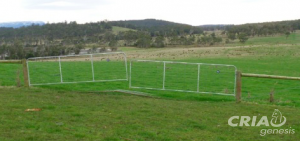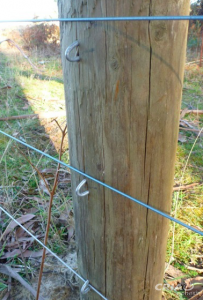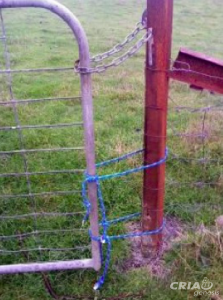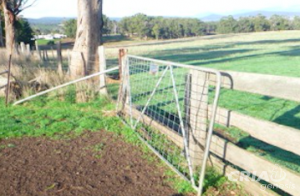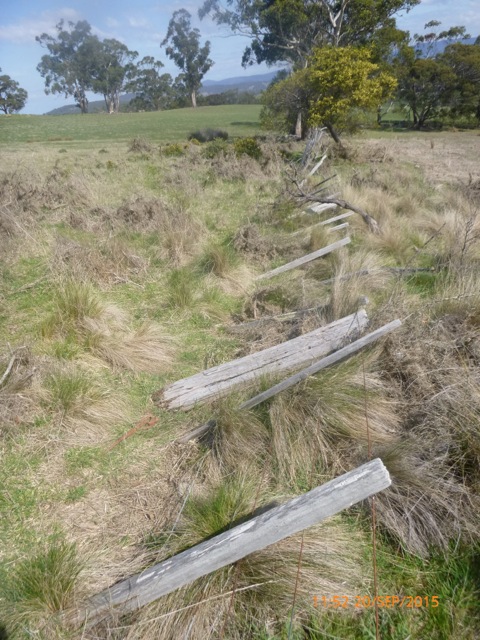The onus is on you to keep your animals contained to your property and animals diseases/infestations off your farm. The first step in biosecurity is having good fences:
- Firstly, make sure existing boundary fences are secure so you can prevent entry of stray livestock onto your property, and prevent your stock from mixing with neighbours’ livestock and/or from creating a hazard on roads. Check boundaries regularly for branches/broken wires and maintain in good order. Consider ringlock with a couple of plain wires on the top for boundary fencing.
- Internal fences should be at least 7-strand plain wire for alpacas. Do not use barb wire or electric fences with alpacas. Map out new fences/replacement fences, dates for replacement, budgets etc. For example, you may plan to replace/upgrade 5% of fencing every year to keep fences in good order and put in x km of internal fencing per year to improve laneways, control grazing, protect shelter belts etc.
- Place gates in sites that enhance stock flow and minimise erosion; hang them so they not only swing but keep stock inside the paddock too. Maintain their function by adjusting as necessary.
- Plan your design well and use a competent fencer.
Subscribe to Farm Biosecurity News here.
This is how not to do it:
